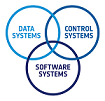Speaker
Description
The aim of this presentation is to describe the foreseen avionic solution for the Vision Based Navigation (VBN) functions of the European Large Logistic Lander (EL3)
The VBN functions of EL3 require computationally intensive algorithms, which results in the need for an appropriate supporting avionic hardware. In particular, the need for a quad-core processor hardware and for an additional FPGA for the image processing tasks of the absolute Crater Navigation (CNav), Terrain Relative Navigation (TRN) and Hazard Detection and Avoidance (HDA) have been identified.
The platforms that have been considered for the EL3 landing GNC offer multi-core processing based on ARM processors. A trade-off has been performed considering the performances of the available OBC alternatives, the FPGA used and the availability of a development or breadboard environment suitable for the Processor In the Loop (PIL) testing. The RUAG Lynx single board computer has been selected. It offers a modern state-of-the-art full space-qualified processing platform based on the ARM Cortex-A72. The Cortex-A72 is a quad-core 64-Bit processor based on the ARMv8-A architecture that offers sufficient performance for the most demanding phase of the landing.
The VBN functions of EL3 are accompanied by the additional GNC functions which perform further tasks such as Mission Vehicle Management (MVM), guidance, navigation filter, and control. These functions have in general a lower processing performance demand than the VBN functions. Therefore, a segregation of the functions between the main OBC and the RUAG Lynx is adopted in EL3.

